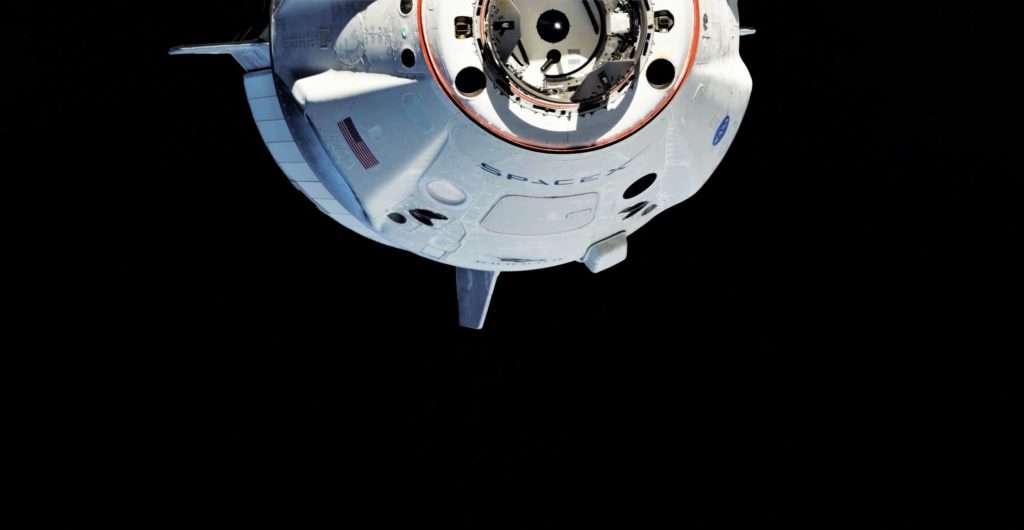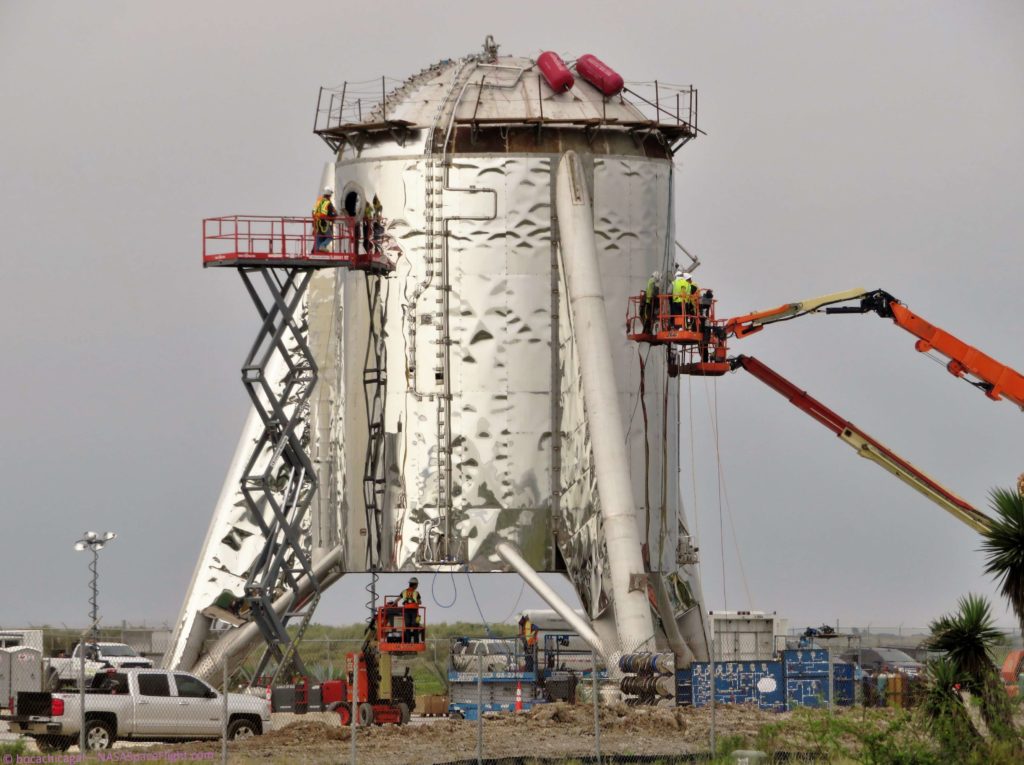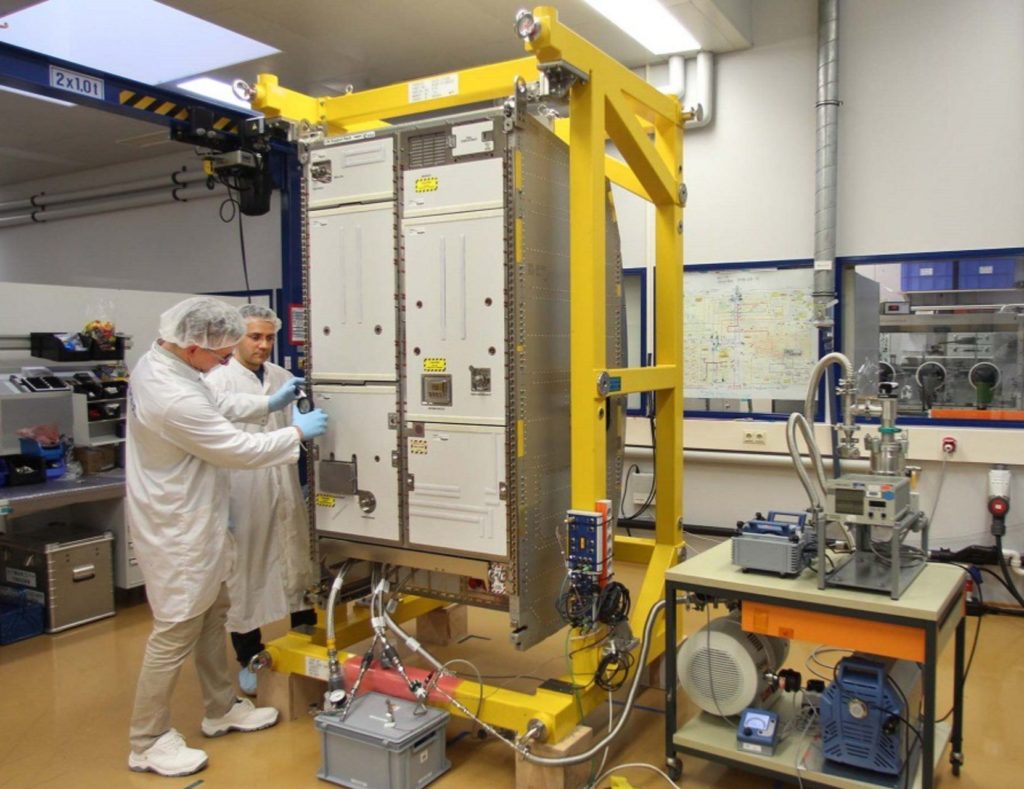News
DeepSpace: SpaceX takes huge step towards Mars with flawless Crew Dragon performance

This is a free preview of DeepSpace, Teslarati’s new member-only weekly newsletter. Each week, I’ll be taking a deep-dive into the most exciting developments in commercial space, from satellites and rockets to everything in between.
If you’d like to receive DeepSpace and all of our newsletters and membership benefits, you can become a member for as little as $3/month here.
While the mission is not done just yet, SpaceX is days away from (hopefully) wrapping up an extraordinarily smooth debut of its newest spacecraft, a human-rated vehicle known as Crew Dragon. Assuming no anomalous behavior during reentry, descent, and landing this Friday, SpaceX will likely be less than six months away from launching its first astronauts to the International Space Station (ISS), the most important step yet towards offering reliable and routine transport to Earth orbit and ultimately between Earth and Mars.
Founded by Elon Musk to kickstart a stagnant space industry and drive humanity to become an interplanetary species, SpaceX is in the process of building the first full-scale prototype(s) of the launch vehicle (Super Heavy) and spacecraft (Starship) it believes will deliver on those promises. Along with countless programmatic and technical lessons learned, every conceivable aspect of Crew Dragon’s development will feed directly into SpaceX’s development of Starship, meant to one day safely transport and land as many as 100 passengers on the surface of Mars.
A spacefaring civilization, one step at a time
In the process of building Crew Dragon, SpaceX has been forced to become rising experts in fields like human-rated environmental control and life support systems (ECLSS), as well as ensuring an even more extreme level of redundancy and reliability compared with SpaceX’s already high standards for their uncrewed Falcon rockets and Cargo Dragon spacecraft.
- More so than any particular piece of technology present on Crew Dragon, the process of both cooperating and grappling with NASA to build the spacecraft to high standards and ‘certify’ it has hopefully had an extremely positive impact on SpaceX’s own engineers and company-wide standards, albeit potentially at the cost of some of the willingness to take risks and move quickly.
“I’m personally convinced that this has made, certainly, SpaceX better, to have NASA guide us, and to look at requirements, and to try to question requirements, and what’s the true reason behind those requirements, and then basically comply with the overall safety culture that NASA taught us, I would say, to some extent. And so I feel like it certainly made a better SpaceX and made better engineers out of the SpaceX engineers. And I really appreciate that very much.”
-Hans Koenigsman, Vice President of Mission Assurance, SpaceX
Feet in Earth orbit, head in the Martian clouds
- Regardless, the end result will ultimately be a reliable spacecraft capable of transporting an average of 4-7 astronauts to and from the ISS, whether that end result is the result of near-perfect execution the first time around or discovering and fixing problems during flight tests.
- Compared to NASA, SpaceX prefers a radically agile approach to development, meaning that the company will rapidly build, test, and fly iterations of the same hardware of software, beginning with the minimum viable product and ending (although improvement never really ends) with an advanced solution optimized by extensive lessons learned.
- Through the process of building Crew Dragon, SpaceX has hopefully absorbed most of the valuable lessons and practices NASA can often be rich with while rejecting the unhealthy and unsuccessful tendencies that contribute to NASA’s distinctly unimpressive modern efforts to build human-rated rockets (SLS) and spacecraft (Orion, Space Shuttle).
- With that knowledge and technical experience, SpaceX may already have an extremely strong foundation upon which it can build its next-gen spacecraft, Starship. In theory, Crew Dragon’s life support system – meant to support up to 7 astronauts with extreme reliability and safety – should be able to scale up to ECLSS fit for dozens or hundreds of passengers.
- In a worst-case scenario relative to mass efficiency, SpaceX could quite literally package Crew Dragon’s ECLSS system into a module and duplicate it as many times as needed for a given Starship crew. Identical modules could then be transported in a cargo bay for any structures built on the surface of Mars or the Moon.
- Understandably, Crew Dragon does not need a significant number of systems critical for longer stays in space, as it is only designed to support humans for approximately one week in free-flight. SpaceX will still need to develop extremely efficient recycling systems, used to recycle water, oxygen, and other consumables to extend the amount of time the ISS (or Starship/Mars colonies) can operate without external supply deliveries.
- In essence, recycling technology is roughly (or sometimes exactly) equivalent to something known as in-situ resource utilization (ISRU), basically prioritizing local resources over shipped goods. A small subset of SpaceX’s future projects team has been working on ISRU – particularly Sabatier reactors for Starship refueling on Mars – for several years.
- In late 2017, Elon Musk stated that the design and development of SpaceX’s own ISRU hardware were “pretty far along.”
Mission Updates:
- SpaceX’s Crew Dragon spacecraft will attempt its first orbital-velocity reentry and Atlantic Ocean splashdown on the morning of Friday, March 8th.
- The second launch of Falcon Heavy could occur as early as late March
- Aside from DM-1 and Falcon Heavy Flight 2, it’s unclear what SpaceX mission will happen next. DM-1 may be the only SpaceX launch in March, while several missions are tentatively scheduled for April and May.
Photos of the week:
B1051 returned to Port Canaveral three days after successfully sending Crew Dragon on its first orbital mission. Thanks to the relatively low-energy trajectory and gentle reentry, SpaceX should be able to refurbish the booster extremely quickly.(c. Tom Cross, Pauline Acalin)


News
Tesla UK sales see 14% year-over-year rebound in June: SMMT data
The SMMT stated that Tesla sales grew 14% year-over-year to 7,719 units in June 2025.

Tesla’s sales in the United Kingdom rose in June, climbing 14% year-over-year to 7,719 units, as per data from the Society of Motor Manufacturers and Traders (SMMT). The spike in the company’s sales coincided with the first deliveries of the updated Model Y last month.
Model Y deliveries support Tesla’s UK recovery
Tesla’s June performance marked one of its strongest months in the UK so far this year, with new Model Y deliveries contributing significantly to the company’s momentum.
While the SMMT listed Tesla with 7,719 deliveries in June, independent data from New AutoMotive suggested that the electric vehicle maker registered 7,891 units during the month instead. However, year-to-date figures for Tesla remain 2% down compared to 2024, as per a report from Reuters.
While Tesla made a strong showing in June, rivals are also growing. Chinese automaker BYD saw UK sales rise nearly fourfold to 2,498 units, while Ford posted the highest EV growth among major automakers, with a more than fourfold increase in the first half of 2025.
Overall, the UK’s battery electric vehicle (BEV) demand surged 39% to to 47,354 units last month, helping push total new car sales in the UK to 191,316 units, up 6.7% from the same period in 2024.
EV adoption accelerates, but concerns linger
June marked the best month for UK car sales since 2019, though the SMMT cautioned that growth in the electric vehicle sector remains heavily dependent on discounting and support programs. Still, one in four new vehicle buyers in June chose a battery electric vehicle.
SMMT Chief Executive Mike Hawes noted that despite strong BEV demand, sales levels are still below regulatory targets. “Further growth in sales, and the sector will rely on increased and improved charging facilities to boost mainstream electric vehicle adoption,” Hawes stated.
Also taking effect this week was a new US-UK trade deal, which lowers tariffs on UK car exports to the United States from 27.5% to 10%. The agreement could benefit UK-based EV producers aiming to expand across the country.
News
Tesla Model 3 ranks as the safest new car in Europe for 2025, per Euro NCAP tests
Despite being on the market longer than many of its rivals, the Tesla Model 3 continues to set the bar for vehicle safety.

The Tesla Model 3 has been named the safest new car on sale in 2025, according to the latest results from the Euro NCAP. Among 20 newly tested vehicles, the Model 3 emerged at the top of the list, scoring an impressive 359 out of 400 possible points across all major safety categories.
Tesla Model 3’s safety systems
Despite being on the market longer than many of its rivals, the Tesla Model 3 continues to set the bar for vehicle safety. Under Euro NCAP’s stricter 2025 testing protocols, the electric sedan earned 90% for adult occupant protection, 93% for child occupant protection, 89% for pedestrian protection, and 87% for its Safety Assist systems.
The updated Model 3 received particular praise for its advanced driver assistance features, including Tesla’s autonomous emergency braking (AEB) system, which performed well across various test scenarios. Its Intelligent Speed Assistance and child presence detection system were cited as noteworthy features as well, as per a WhatCar report.
Other notable safety features include the Model 3’s pedestrian-friendly pop-up hood and robust crash protection for both front and side collisions. Euro NCAP also highlighted the Model 3’s ability to detect vulnerable road users during complex maneuvers, such as turning across oncoming traffic.
Euro NCAP’s Autopilot caution
While the Model 3’s safety scores were impressive across the board, Euro NCAP did raise concerns about driver expectations of Tesla’s Autopilot system. The organization warned that some owners may overestimate the system’s capabilities, potentially leading to misuse or inattention behind the wheel. Even so, the Model 3 remained the highest-scoring vehicle tested under Euro NCAP’s updated criteria this year.
The Euro NCAP’s concerns are also quite interesting because Tesla’s Full Self-Driving (FSD) Supervised, which is arguably the company’s most robust safety suite, is not allowed for public rollout in Europe yet. FSD Supervised would allow the Model 3 to navigate inner city streets with only minimal human supervision.
Other top scorers included the Volkswagen ID.7, Polestar 3, and Geely EX5, but none matched the Model 3’s total score or consistency across categories. A total of 14 out of 20 newly tested cars earned five stars, while several models, including the Kia EV3, MG ZS, and Renault 5, fell short of the top rating.
Elon Musk
Why Tesla’s Q3 could be one of its biggest quarters in history
Tesla could stand to benefit from the removal of the $7,500 EV tax credit at the end of Q3.

Tesla has gotten off to a slow start in 2025, as the first half of the year has not been one to remember from a delivery perspective.
However, Q3 could end up being one of the best the company has had in history, with the United States potentially being a major contributor to what might reverse a slow start to the year.
Earlier today, the United States’ House of Representatives officially passed President Trump’s “Big Beautiful Bill,” after it made its way through the Senate earlier this week. The bill will head to President Trump, as he looks to sign it before his July 4 deadline.
The Bill will effectively bring closure to the $7,500 EV tax credit, which will end on September 30, 2025. This means, over the next three months in the United States, those who are looking to buy an EV will have their last chance to take advantage of the credit. EVs will then be, for most people, $7,500 more expensive, in essence.
The tax credit is available to any single filer who makes under $150,000 per year, $225,000 a year to a head of household, and $300,000 to couples filing jointly.
Ending the tax credit was expected with the Trump administration, as his policies have leaned significantly toward reliance on fossil fuels, ending what he calls an “EV mandate.” He has used this phrase several times in disagreements with Tesla CEO Elon Musk.
Nevertheless, those who have been on the fence about buying a Tesla, or any EV, for that matter, will have some decisions to make in the next three months. While all companies will stand to benefit from this time crunch, Tesla could be the true winner because of its sheer volume.
If things are done correctly, meaning if Tesla can also offer incentives like 0% APR, special pricing on leasing or financing, or other advantages (like free Red, White, and Blue for a short period of time in celebration of Independence Day), it could see some real volume in sales this quarter.
You can now buy a Tesla in Red, White, and Blue for free until July 14 https://t.co/iAwhaRFOH0
— TESLARATI (@Teslarati) July 3, 2025
Tesla is just a shade under 721,000 deliveries for the year, so it’s on pace for roughly 1.4 million for 2025. This would be a decrease from the 1.8 million cars it delivered in each of the last two years. Traditionally, the second half of the year has produced Tesla’s strongest quarters. Its top three quarters in terms of deliveries are Q4 2024 with 495,570 vehicles, Q4 2023 with 484,507 vehicles, and Q3 2024 with 462,890 vehicles.
-

 Elon Musk4 days ago
Elon Musk4 days agoTesla investors will be shocked by Jim Cramer’s latest assessment
-

 News1 week ago
News1 week agoTesla Robotaxi’s biggest challenge seems to be this one thing
-

 Elon Musk2 weeks ago
Elon Musk2 weeks agoFirst Look at Tesla’s Robotaxi App: features, design, and more
-

 News2 weeks ago
News2 weeks agoSpaceX and Elon Musk share insights on Starship Ship 36’s RUD
-

 News2 weeks ago
News2 weeks agoWatch Tesla’s first driverless public Robotaxi rides in Texas
-

 News1 week ago
News1 week agoWatch the first true Tesla Robotaxi intervention by safety monitor
-

 News2 weeks ago
News2 weeks agoTesla has started rolling out initial round of Robotaxi invites
-

 Elon Musk2 weeks ago
Elon Musk2 weeks agoTesla to launch in India in July with vehicles already arriving: report

























